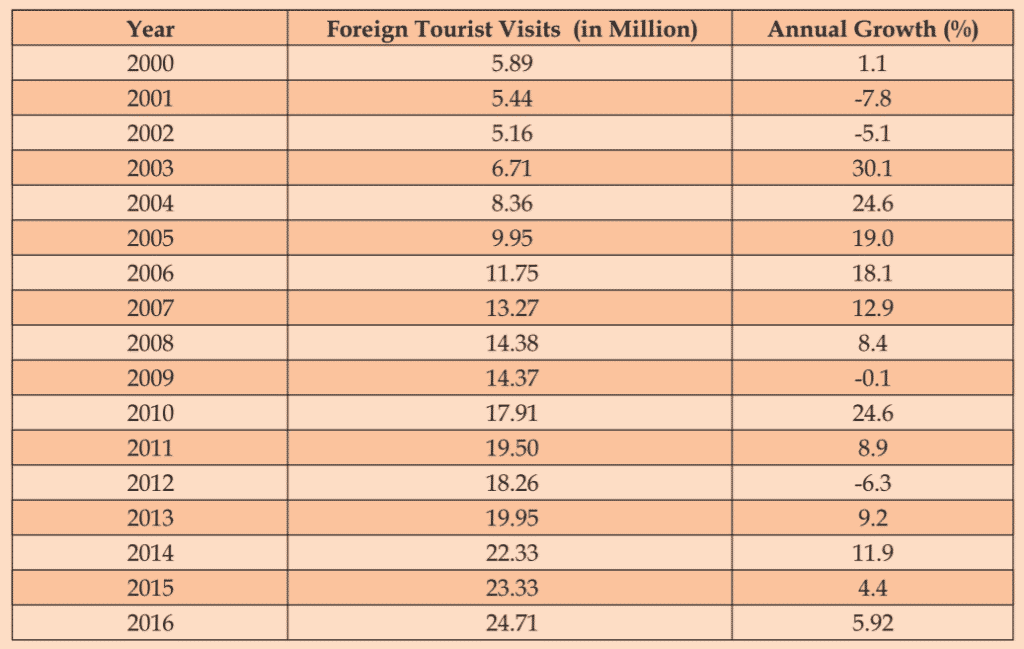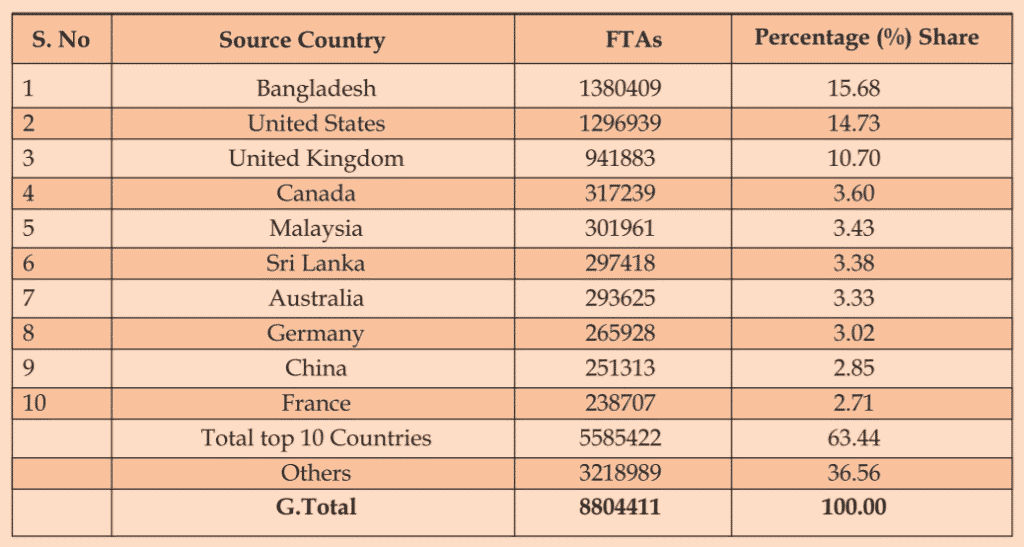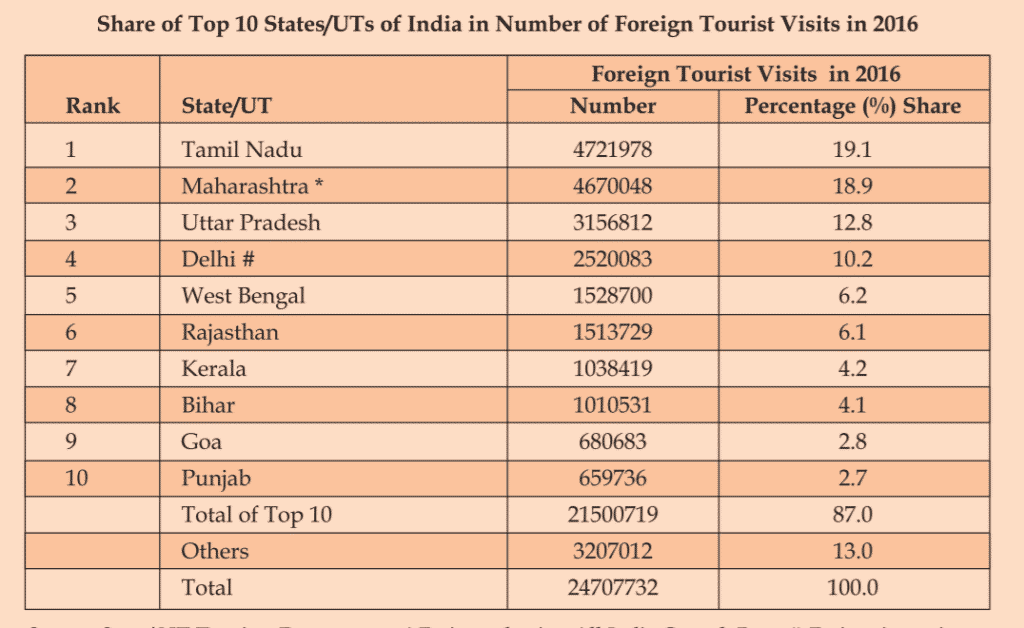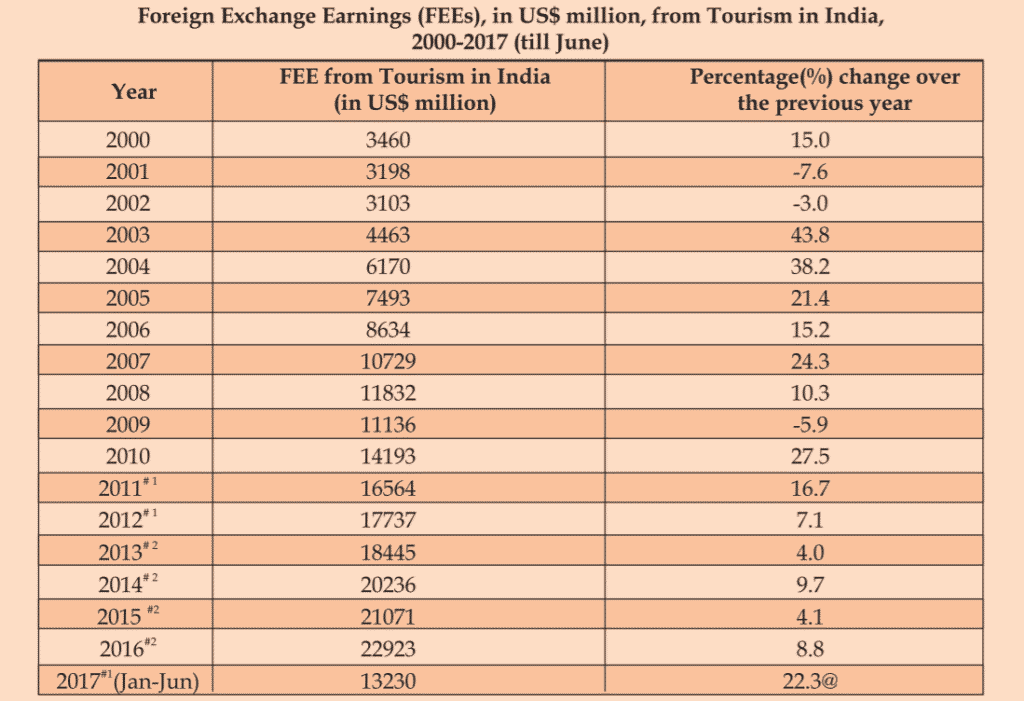Travel and Tourism are as old as mankind on earth. Man at beginning of his existence roamed about the surface of the earth in search of food, shelter, security and better habitat. However, in course of time, such movements were transformed into wanderlust.
During Hindu and Chinese civilization a movement of religion, education and culture began. Christian missionaries, Buddhist monks and other traveled far and wide carrying religious messages and returned with fantastic images and opinions about alien people.
In ancient time people travel for the religious purpose in India. There are many proofs that tell that people travel for Char Dham Yatra in ancient time. Development of Indian tourism starts into the 19th century when Sir John Sargent committee was set up in 1945 for promotion and development of tourism in India.
After that, the Indian government took many various incentives for the development of Indian tourism through tourism policies, economic reforms. Various committees were created for tourism development and separately dedicated ministries and tourism organizations established.
Various tourism policies, plans, and committees were created by the Indian government for the development of Indian Tourism. These policies or plans were headed by the Ministry of Tourism. Ministry of Tourism (MOT) is a nodal agency for the formulation of national tourism policies and programmes related to tourism.
Some major initiatives taken by the Indian government for development and promotion of Indian tourism are following as:
Economic Reforms
The government of India has taken many economic reforms for the development and promotion of Indian tourism. Since, 1952 when India was adopted policy of development through planning, in 1952, when the first five-year plan was created.
There are a number of economic reforms has been taken from time to time for development of Indian tourism and Indian economy like i.e. rising of disposable income, middle-class family, Dual couple model, LTCC (Leave Travel Concession), Paid holidays etc.
Five Year Plans
Indian government allocates funds for the development and promotion of Indian tourism in these plans. India government introduce a total eleven five years plans. Tourism got a status of an industry in the seventh five-year plan, and 68 crore funds were allocated.
The highest fund was allocated for tourism into the eleventh five-year plan, a total sum of 9290 crores for development of Indian tourism at domestic as well as international level.
First Tourism Policy
In November 1982, a tourism policy was formulated and presented to the parliament of India. The objective of the policy was to develop tourism, helps to preserve Indian heritage and culture and projecting the same to the world.
Another objective of this tourism policy was to bring socio-economic benefits in terms of employment, income generation, revenue generation, and foreign exchange.
National Action Plan
In 1992, a national action plan was announced. It was regarded as an emerging action plan to set things right in some key areas. The objectives of this action plan were to improve the tourism infrastructure, restructuring, and strengthening of the institutions for the development of human resources.
National Tourism Policy 2002
For the first time in the history of tourism development in India, the national tourism policy was announced in 2002. It is highlighted that a tourist should feel satisfied and return with unforgettable experiences.
The concept of hospitality included 7s of tourism in this policy. These are following as:
- Welcome
- Safety
- Co-operation
- Facilitation
- Infrastructure Development
- Information
- Cleanliness
Incredible India Campaign
Incredible India campaign is a marketing campaign for Indian tourism to promote at the international level. Incredible India title was officially branded and promoted by Amitabh Kant in 2002. The main motto of this campaign is to promote India as a world-class tourism destination in the world tourism market.
Many campaigns were held under Incredible India campaign into developing country such as USA or UK. Indian tourism Ministry showcases Indian tourism beauty and its potential into the world tourism market to create awareness about Indian tourism destination or to attract international tourist.
Department of Tourism (DOT)
On March 1, 1958, a separate department of tourism was created in place of a tourist traffic branch under the Ministry of Transport and Communications. It was headed by a director general in the rank of a joint secretary to the Govt. of India.
L.K Jha Committee
This committee was prompted by Indian Government in March 1963 under the chairmanship of Mr. L.K. Jha. This committee made several recommendations to improve tourism inflow into India. This committee gives some important suggestion and recommendation to the Indian government for development and improvement of Indian tourism at domestic as well as international level.
Indian Tourism Development Corporation (ITDC)
The India Tourism Development Corporation (ITDC) was established under the MOT (Ministry of Tourism) in October 1966. ITDC has been responsible for building tourism infrastructure, promotion, and expansion in the country.
With the annual turnover of Rupees 500 crore, ITDC works for developing tourism infrastructure and promoting India as a tourist destination. It is a full government owned and managed the corporation.
Tourism Finance Corporation of India Ltd. (TFCI)
Tourism Finance Corporation of India was set up a specialized all India Financial Institution to meet the financing or funding requirement of tourism and hotel industry. TFCI was incorporated as a public limited company under the company act 1956, on 27th January 1989. The operational activities were started on 1st February 1989.
Travel Agent Association of India (TAAI)
The Travel Agent Association of India is an apex body and it is the oldest association in India. It was established in the year 1951. The prime objective of TAAI is threefold. These are following as:
- To safeguard the interests of players in the tourism industry.
- To protect the rights of travelers.
- To promote orderly growth and development of the tourism industry.
As for as India is concerned, the International tourist traffic has been growing at a rate of 8 percent during the last year. The Inbound visitors 2.28, 2.37, 2.36 and 2.51, 2.8 million in the year of 1996, 1997, 1998, 1999 and 2003 respectively. Tourism has created direct employment of about 9.8 million in 1997-98. It accounted for about 2.4% of the total labor force.
The Ninth Plan Working Group Report of the Planning Commission has forecasted 5.95 million arrivals in 2001 and US$ 8% billion foreign exchange earnings by 2001. Further, the world tourism and travel council estimated that tourism will contribute Rs. 5,00,000 crores to the GDP, create 8 million new jobs, Rs. 1,30,000 crores in capital investments and Rs. 1,60,000 crores in export earning to the Indian economy.
Further, WTTC’s third satellite accounting research (SAR) Forecasts 7.4 percent real growth of Indian tourism. The World Tourism Organization (WTO) estimated that 5.08 million tourists visit in India in 2010 and 8.90 million in 2020.
Internation tourism trends in India are following as:

India receives 15.68% of inbound tourism from Bangladesh, 14.73% from the United States, 10.70% from the United Kingdom. These three are the top three countries from which India receive most of the Inbound tourists. The details of the top 10 source country for inbound tourism in India are following as:

Tamil Nadu attracts 19.1 %, Maharashtra 18.9 %, Uttar Pradesh 12.8% of the total inbound tourism of India. These are the top 3 states of India in the number of foreign tourist visits. The share of top 10 states/UTs of India in the number of foreign tourist visits are following as:

Foreign exchange earning from inbound tourism of India is increasing year after year. It was 3460 million US$ in 2000 and 13230 million US$ in 2017. Foreign exchange increase at the rate of 22.3% from 2000 to the present date. Foreign exchange earnings from tourism in India from 2000 to 2017 are following as:

The Indian government is developing a world-class infrastructure to attract foreign tourist as well as domestic tourists. Ministry of tourism operates many marketing campaigns for promotion of Indian tourism among foreign tourists.